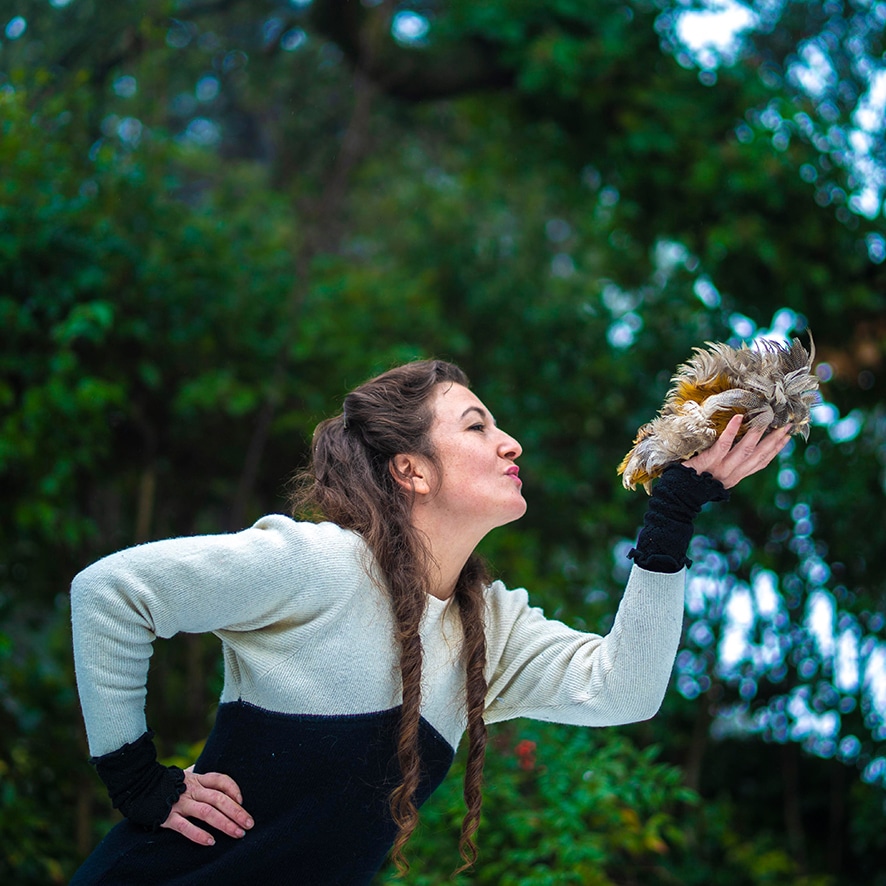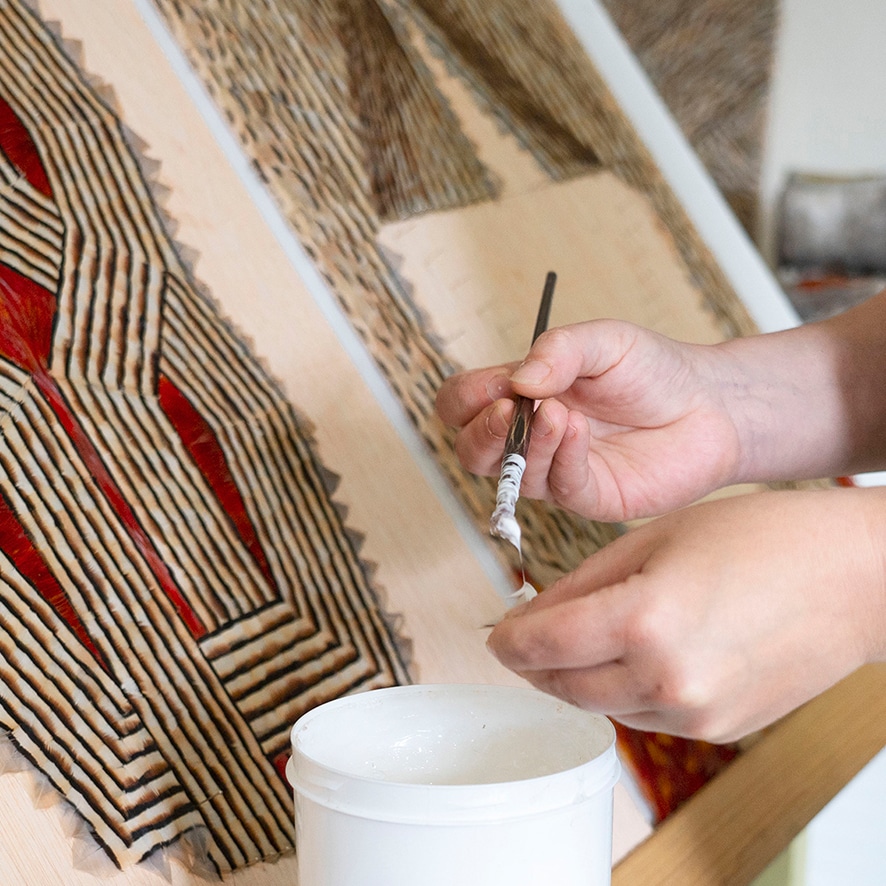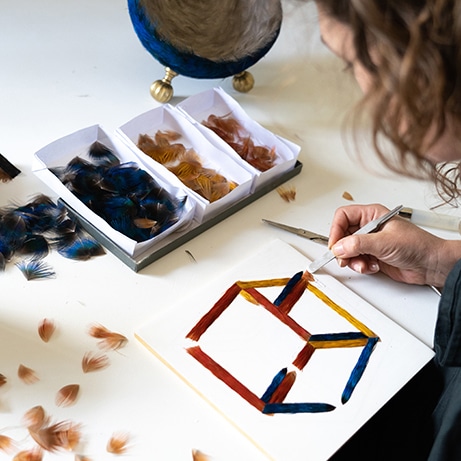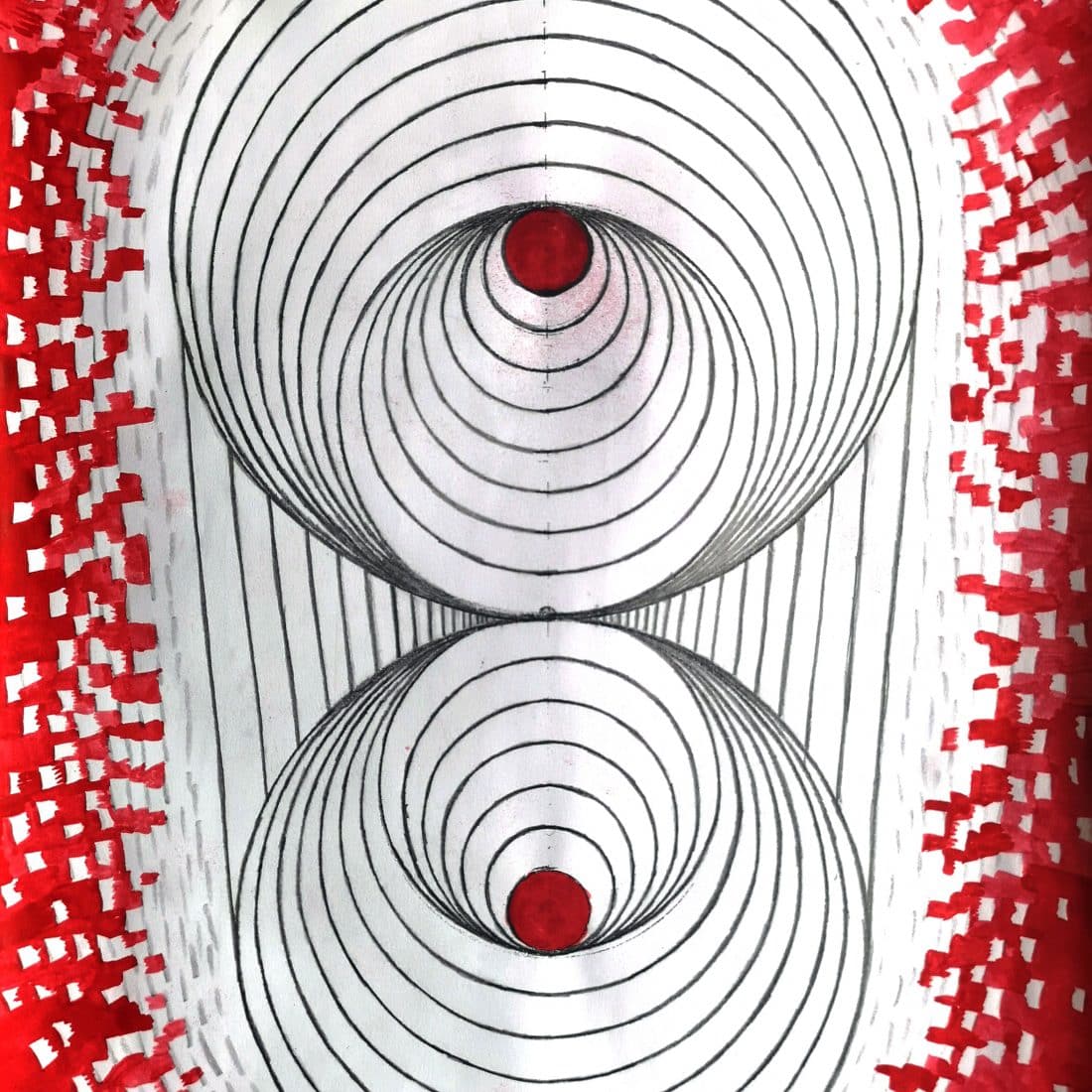
Origins
Growing up between my father’s painting studio and my mother’s high-fashion millinery workshop allowed me to playfully learn a wide variety of crafts. It was at the age of eight when I discovered that no one in my country was dedicated to creating feather appliques anymore. My parents nurtured my curiosity for ancestral arts and crafts through art galleries and archaeological museums. While studying mathematics at university, I realized that my destiny was to revitalize the craft of feather artistry.
My constant quest led me to discover an exquisite treasure at the age of twenty-three: Mesoamerican Feather Art, where this art intertwined with sacred symbolism. I was fascinated by the technical skill of the amantecas (skilled artists capable of capturing the desires and longings of the human heart in each piece), a mastery that has never ceased to inspire and fuel my desire to explore the infinite aesthetic and artistic possibilities of feathers. Since then, my passion has been to revitalize forgotten techniques from different cultures, infusing them with a distinctly contemporary aesthetic influenced by my mathematical background and artistic influences. Immersing myself in these cultures allowed me to discover and desire to bring to our present day not only a part of their cosmogony but also their vision of the relationship between humans and nature, as well as their vision of the most exquisite luxury.
Conceptualization of the Feather Artwork
When embarking on the task of conceiving a piece for an individual or a space, I weigh a wide range of variables, both intrinsic and extrinsic. In shaping the form and design of the piece, I take into account, based on these variables, the color of the feathers and their pattern, as well as the significance they hold. This allows me to tailor the work both in its aesthetic dimension and its totemic condition.
Designing Pictorial Patterns
I always work with undyed feathers, so the intrinsic pattern of each feather fully conditions the artwork. In this way, as I classify the feathers based on their subtle differences, I envision the pictorial possibilities that each one offers me. This stage is akin to the artist preparing pigments.


Drafting of the Feather Artwork
The creative process of drafting is always conditioned by the feasibility of the design, which involves tracing a vector field onto the mosaic that will define the direction of the feathers. This stage is where I enjoy taking the most risks, and therefore, it proves to be the most demanding. It is here where my mathematical mind finds delight in the constant challenges I set for myself.
Creation of the Feather Artwork
In the creation process, the angle of placement of each feather, as well as the overlaps between them, acquire crucial significance, infusing life into the design and achieving the aesthetic harmony I pursue. The resulting work resembles a puzzle composed of pieces that function as delicate brushstrokes.
Orígenes
Gracias a crecer entre el estudio de pintura de mi padre y el taller de sombrerería de alta costura de mi madre pude aprender jugando una amplia diversidad de oficios. Fue a los ocho años cuando descubrí que ya nadie en mi país se dedicaba a crear apliques de plumas. Mis padres fomentaron mi curiosidad por el arte y artesanías ancestrales en galería de arte y museos de arqueología. En la universidad, mientras estudiaba matemáticas, supe que mi destino era revitalizar el oficio del arte plumaria.
Mi constante búsqueda me llevó a descubrir a los veintitrés años un tesoro exquisito: el Arte Plumaria mesoamericano, donde este arte se entrelazaba con la simbología sagrada. Quedé fascinada por la habilidad técnica de los amantecas (hábiles artistas capaces de plasmar en cada pieza el deseo y anhelo del corazón humano), un dominio que nunca ha dejado de inspirarme y avivar en mi el deseo de explorar las infinitas posibilidades estéticas y artísticas de las plumas. Desde entonces mi pasión es revitalizar las técnicas olvidadas de diferentes culturas nutriéndolas de una estética inminentemente contemporánea influenciada por mi formación matemática y mis influencias artísticas. Adentrarme en esas culturas me permitió descubrir y querer traer a nuestros días parte de también su cosmogonía, tanto su visión de la relación del hombre con la naturaleza como su visión del lujo mas exquisito.


Conceptualización de la pieza de Arte Plumaria
Al embarcarme en la tarea de concebir una obra para un individuo o un espacio, sopeso una amplia colección de variables, tanto intrínsecas como extrínsecas. En la definición de la forma y el diseño de la pieza tengo presentes, en función de dichas variables, el color de las plumas y su patrón, así como la significación que atesoran. Esto me permite adecuar la obra tanto en su dimensión estética como en su condición totémica.
Diseño de patrones pictóricos
Trabajo siempre son plumas sin teñir, por lo que el patrón intrínseco de cada pluma condiciona plenamente la obra. De esta manera, mientras clasifico las plumas en base a sus sutiles diferencias, voy imaginando las posibilidades pictóricas que cada una de ellas me brinda. Este punto se asemeja a la preparación de los pigmentos del artista.
Bocetado de la obra de Arte Plumaria
El proceso creativo del bocetado está siempre condicionado por la viabilidad del diseño, que implica el trazado de un campo vectorial sobre el mosaico que definirá la dirección de las plumas. En esta etapa es donde mas me gusta arriesgar y por lo tanto se revela como la más exigente, es aquí donde mi mente matemática halla el deleite en los desafíos constantes que me propongo.
Realización de la obra de Arte Plumaria
En el proceso de creación el ángulo de colocación de cada pluma, así como las superposiciones entre ellas, adquieren una relevancia crucial, infundiendo vida al diseño y consiguiendo la consonancia estética que persigo. La obra resultante se asemeja a un rompecabezas compuesto por piezas que funcionan como delicadas pinceladas.

